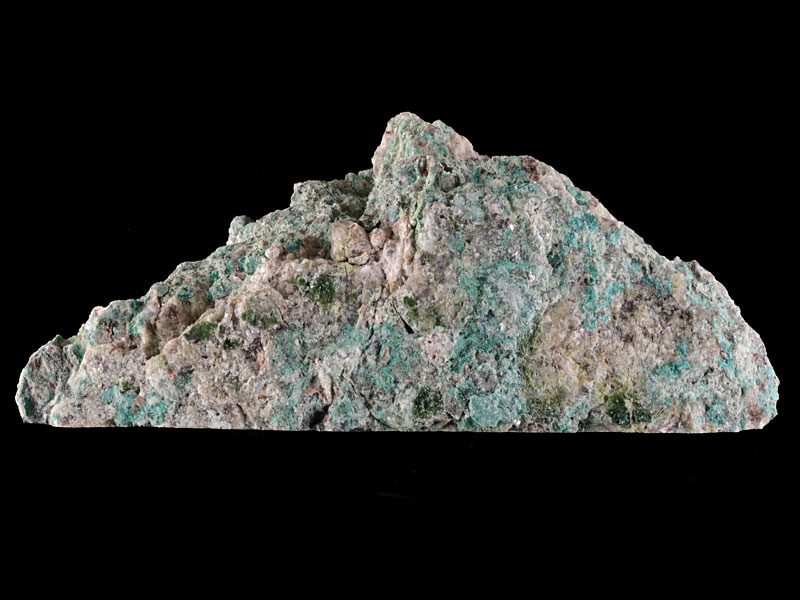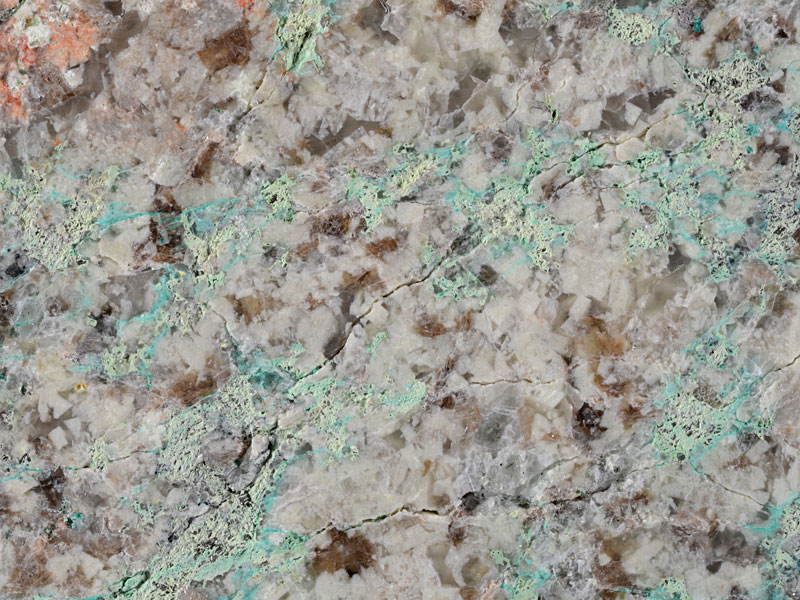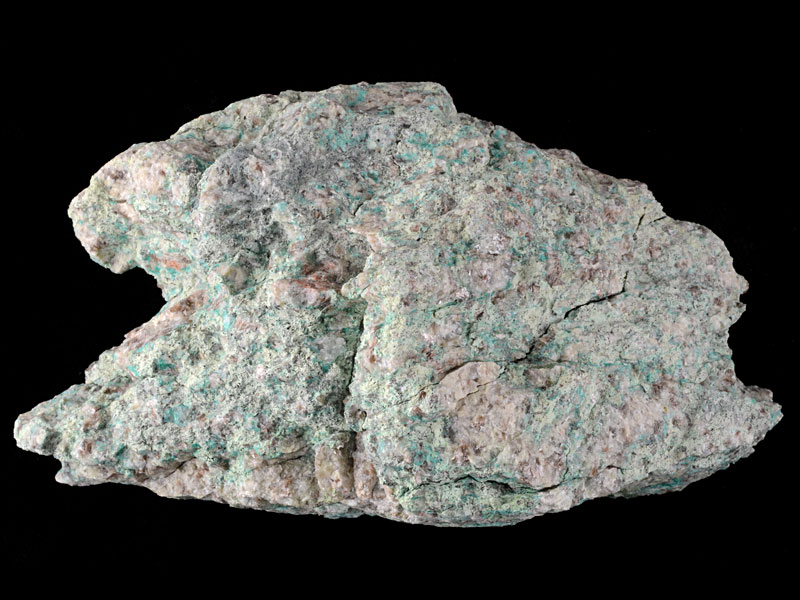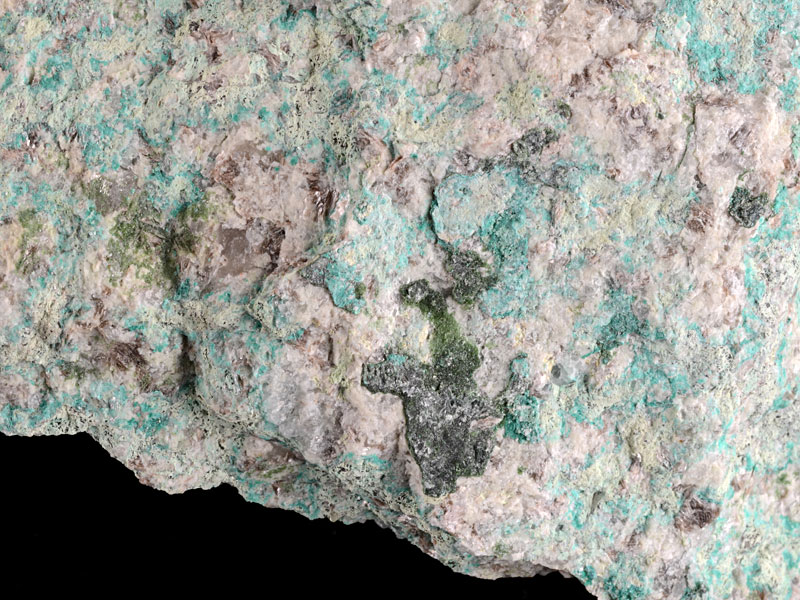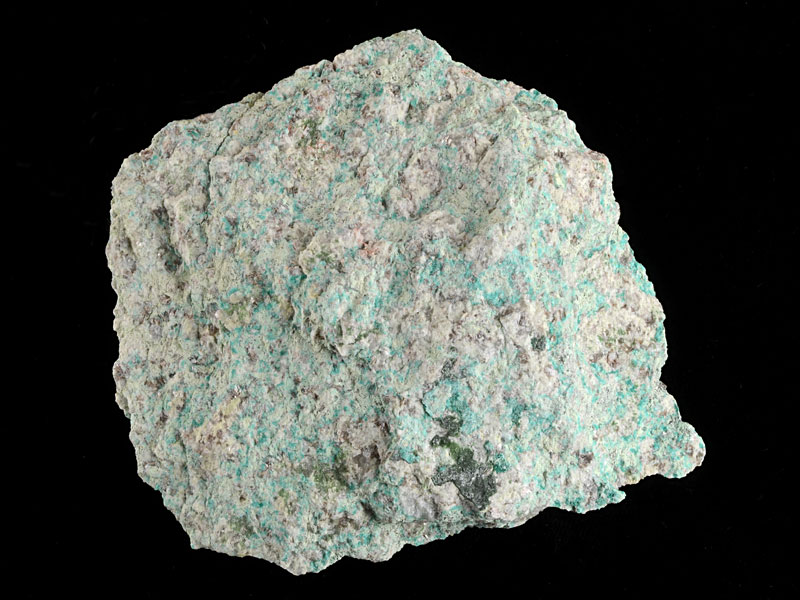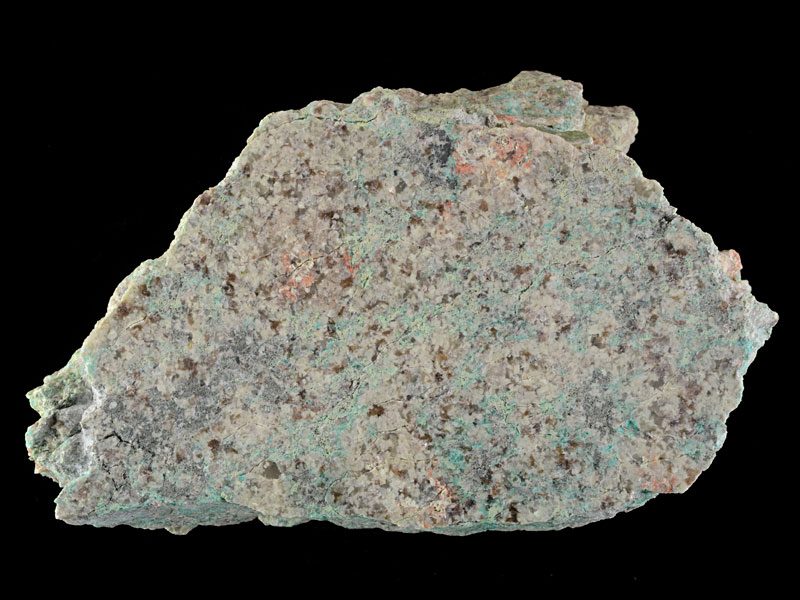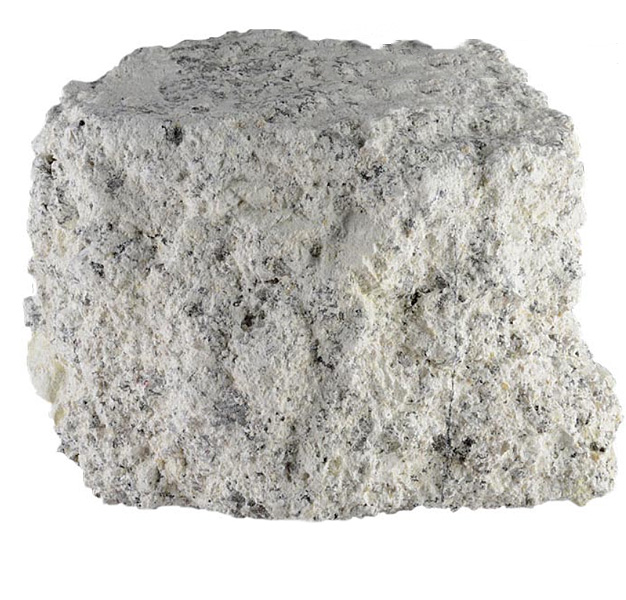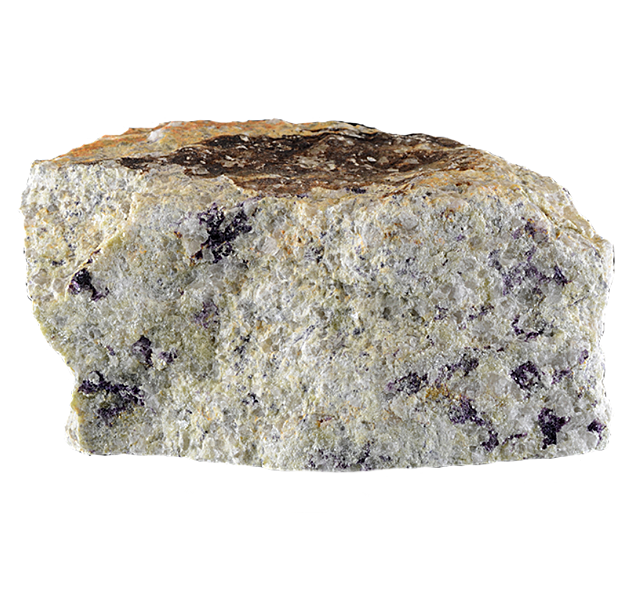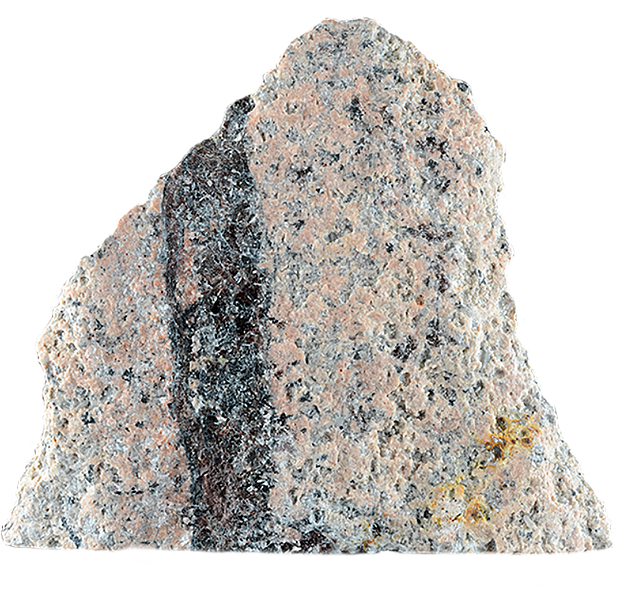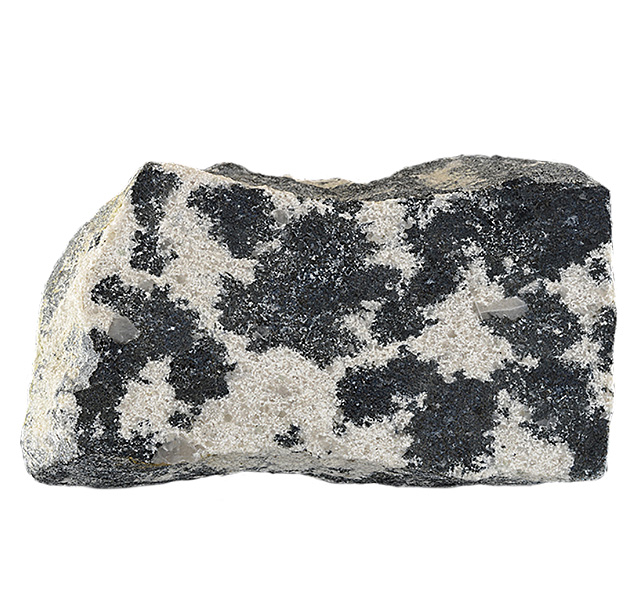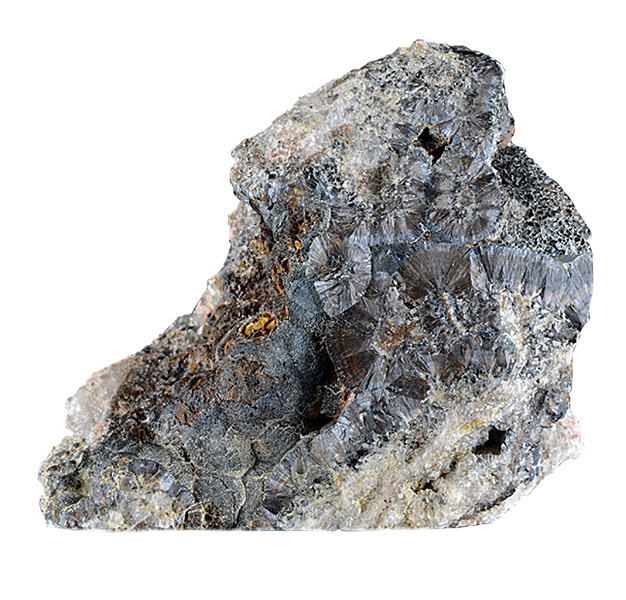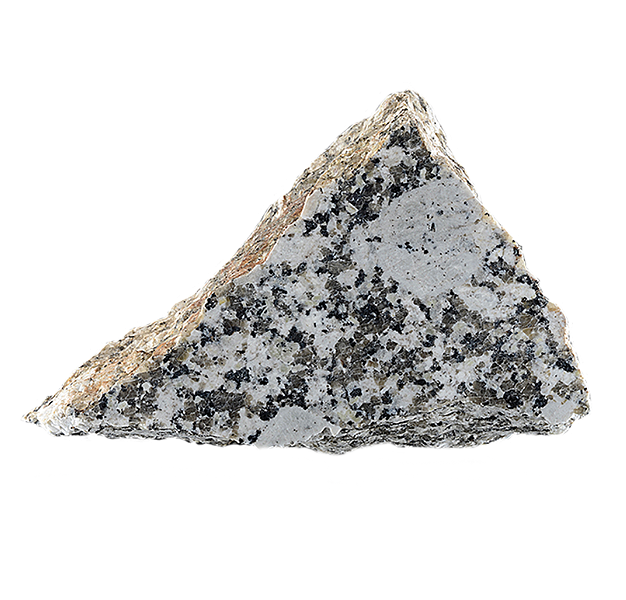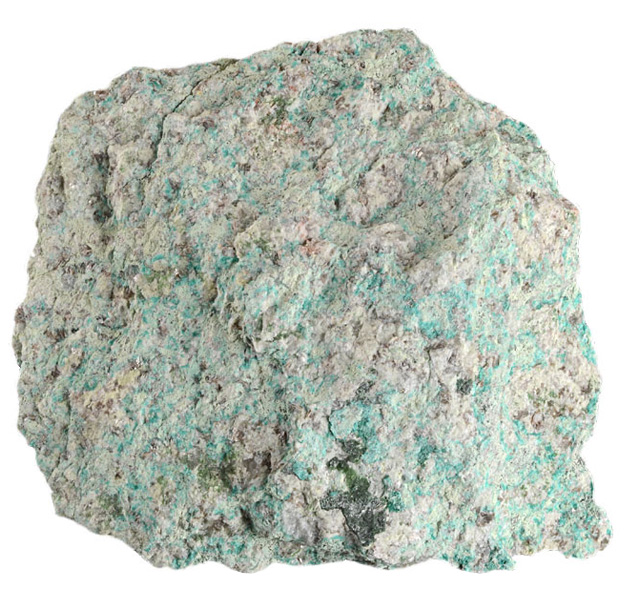
Fact sheet
This topaz greisen has been subjected to copper-bearing fluids which have left behind considerable chalcopyrite. The rock looks green in hand specimen because later fluids have altered the chalcopyrite and two green secondary copper minerals have been formed. They are both hydrous copper-aluminium phosphates - turquoise (light bluish-green) and libethenite (darker apple green). Both are difficult to see in thin section (you will have to zoom into the thin section view to see them) because they only form thin coatings. Instead you will see large areas of an opaque (black) mineral in the ppl view. That's mostly chalcopyrite.
Note that the plagioclase feldspar is considerably altered - much is now replaced by fine-grained sericitic mica. Testimony to an extensive hydrothermal system that was responsible for creating the china clay resource of this granite complex.
Gunheath china clay pit is situated on a small lobe of extremely evolved, granite - it's the source of many elements (boron, lithium, fluorite, phosphorus) present in this sample, and the driving force behind the hydrothermal system.
A case study of the St Austell granite complex in Cornwall, England, illustrating the range of rocks associated with a granite intrusion. The earliest part of the complex is a siderophyllite (biotite) granite containing muscovite and tourmaline typical of a SW England granite, with many primary magmatic features.
This early intrusion was followed by the intrusion of an evolved volatile-rich magma which was the driving force behind a series of intense hydrothermal processes as volatiles escaped from this magma and helped to establish an extensive alteration halo (aureole). Boron, fluorine and lithium (as well as water) played major roles in the formation of the second intrusion and in the associated hydrothermal processes. Igneous activity lasted around 18 million years from 282 Ma (siderophyllite granite) to 265 Ma (fluorite granite).
